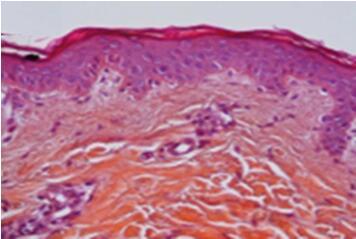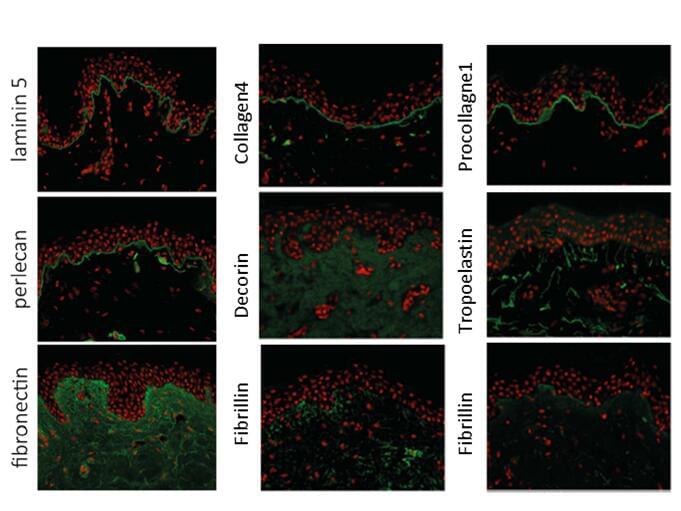Ex vivo Skin Explants
Animal models have been proven to be not perfect for dermocosmetics testing, since animal models do not accurately represent the structure of human skin. In vitro, ex vivo techniques can aid skin research which can be adapted to study a range of conditions in order to more accurately study human skin diseases and aid drug development.
Compared with in vitro skin models, ex vivo models can be more accurate on representing the human skin in some case, such as the effect of the extracellular matrix (ECM) in terms of structure, cell signaling mechanisms and the processes of metabolism, the incorporation of skin appendages such as hair follicles and sweat glands, and the effects of dermal absorption. Ex vivo human skin is more appropriate for certain types of research, use of whole skin biopsies in culture allows the effect of individual ingredients and formulations, transdermal delivery, topical penetration and percutaneous absorption to be tested in an environment more closely mimicking normal skin.
 Fig.1 Histological examination of H&E-stained skin cryosections showing the morphology of the stratum corneum, epidermis, and dermis.
Fig.1 Histological examination of H&E-stained skin cryosections showing the morphology of the stratum corneum, epidermis, and dermis.
Creative Bioarray provides highly predictive and cost-effective ex vivo human skin model and various ingredients and formulation screening services in laboratory conditions prior to in vivo clinical evaluations for your cosmetics and dermatology products.
Creative Bioarray ex vivo human skin model advantages
- The skin model closest to clinical testing
- Skin excised from different body areas
- Inter-individual variability can be tested
Specific Markers
- Filaggrin
- Involucrin
- Loricrin
- Corneodesmosin
- Procollagne 1
- Tropoelastin
- Decorin
- Perlecan
- Keratin 10
- Keratin 5
- Presence of different epidermal classes of lipids comprising ceramides
- Collagen
- Laminin V
- Alpha6Beta4-integrin
- BP antigen
- Ki67
- Others
 Fig.3 Immuno-labeling of different markers in ex vivo skin explant
Fig.3 Immuno-labeling of different markers in ex vivo skin explant
 Fig.2 Immunohistological analysis of tissue morphology in
Fig.2 Immunohistological analysis of tissue morphology in
an organ culture model using hematoxylin and eosin (H and E) staining
Applications
Creative Bioarray ex vivo skin explants allows for the evaluation of topically applied compounds, chemicals, cosmetic/personal care product ingredients and final formulations for the following supporting claims:
- Anti Aging
- Pigmentation
- Stress / Inflammation
- UV Protection
Our ex vivo skin explants can be applicable to various testing including Efficacy testing, Topical application, Dermal studies, Epidermal studies, Percutaneous absorption, Metabolism, Long term studies, Repeated dose assay, Langerhans cells study, Skin resident T cells study, Immune responses, Melanogenesis, and Melanocyte study Permeability.
Quote and ordering
Our customer service representatives are available 24hr a day!
Related models
Reconstructed Human Epidermis (RHE)
In vitro Full Thickness Skin Model
Neurodermatology Skin Model
Pigmented Epidermis Model
Psoriasis Skin Model
Explore Other Options